On July 22, 130 years ago, Pavel Osipovich Sukhoi, renowned Soviet aerospace engineer and founder of the Sukhoi Design Bureau, was born. His Sukhoi produced aircraft have gained a significant place in the Russian and world aviation history.
Legendary Su aircraft – in our photo gallery.

The Su-27UBK is a Russian two-seat fourth-generation supersonic jet fighter and trainer. It is designed for training and flight skills improvement as well as for practicing team flights. The aircraft is also fully ready for combat usage.
Above: A Su-27UBK trainer during flight.
Above: A Su-27UBK trainer during flight.
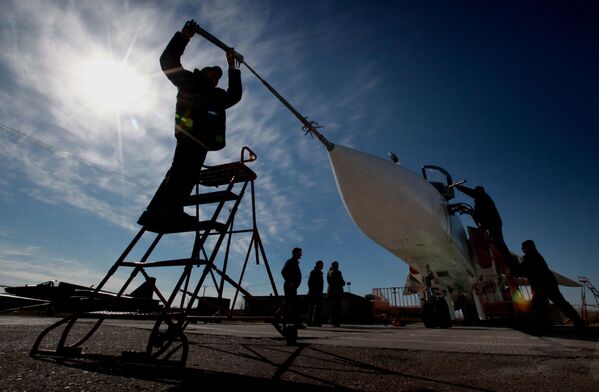
2/17
© Sputnik / Vitaliy Ankov
The Su-24 (NATO reporting name Fencer) is a Soviet/Russian supersonic variable-geometry wing attack aircraft. It can conduct airstrikes under any weather conditions, including at low altitudes. The aircraft is capable of precisely hitting various types of ground and surface targets.
Above: A Su-24 aircraft at the 322 Aircraft Repair Plant in Primorye Territory.
Above: A Su-24 aircraft at the 322 Aircraft Repair Plant in Primorye Territory.
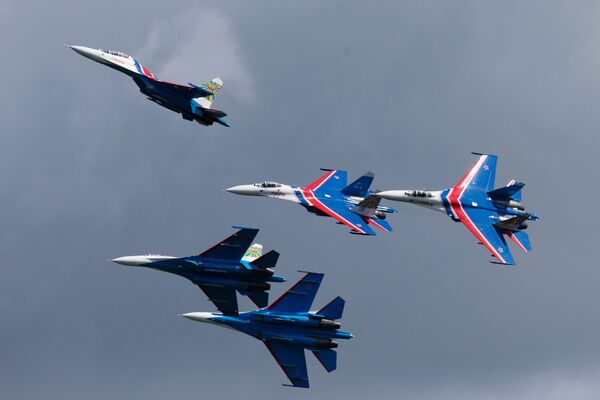
3/17
© Sputnik / Igor Russak
The Su-27 (NATO reporting name Flanker) is a Soviet/Russian fourth-generation multirole all-weather fighter aircraft. It was intended as a competitor for the US fourth-generation fighters such as the F-14 Tomcat and F-15 Eagle. The Su-27 has usually been used for air supremacy operations, but also can perform aerial warfare missions.
Above: The Russian Knights aerobatic display team performs at the Pushkin Military Airport during the 2015 International Maritime Defense Show in St. Petersburg.
Above: The Russian Knights aerobatic display team performs at the Pushkin Military Airport during the 2015 International Maritime Defense Show in St. Petersburg.
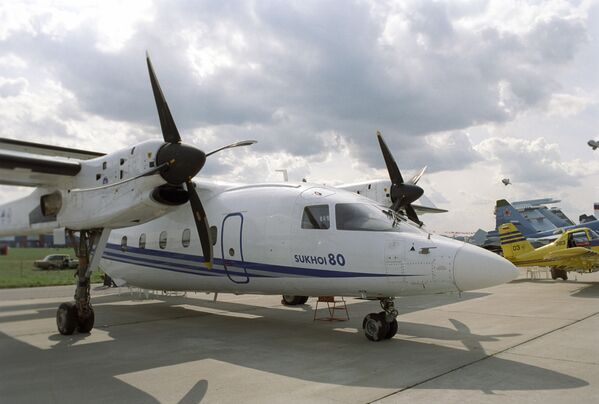
4/17
© Sputnik / Aleksander Polyakov
Pavel Sukhoi was born in the small Belarusian town of Hlybokaye, near Vitebsk. After school in 1915 he went to the Imperial Moscow Technical School. He was drafted in the Imperial Russian Army when World War I broke out. In 1920, he was demobilized and went back to the institute, graduating in 1925. He worked for several years as an engineer/designer at Central Aerohydrodynamic Institute and Moscow Factory Number 156. In September 1939, Sukhoi founded an independent engineering and design department, named Sukhoi Design Bureau (OKB Sukhoi).
Above: A Su-80GP multirole passenger and transport aircraft.
Above: A Su-80GP multirole passenger and transport aircraft.

5/17
© Sputnik / Alexey Filippov
The T-50 PAK (FA) is a Russian fifth-generation multirole jet fighter. It will become the first operational stealth aircraft of the Russian Air Forces and will be equipped with advanced avionics and all-digital systems. The aircraft is expected to enter mass production in 2017.
Above: A T-50 PAK (FA) performs a demo flight at the MAKS 2013 International Aviation and Space Salon in Zhukovsky.
Above: A T-50 PAK (FA) performs a demo flight at the MAKS 2013 International Aviation and Space Salon in Zhukovsky.
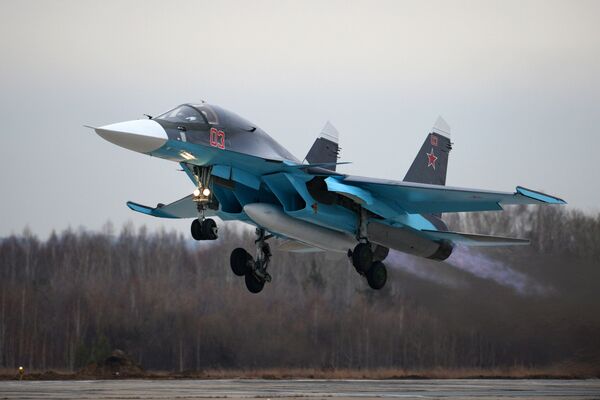
6/17
© Sputnik / Аleksander Kryazhev
The Su-34 (NATO reporting name Fullback) is a Russian twin-seat strike fighter. It is based on the Su-27 and is designed for tactical deployment against ground and naval targets on solo and group missions in daytime and at night, under any weather conditions. It also can be used for recon operations. The aircraft is intended to replace the Su-24.
Above: A Su-34 fighter during take-off at the airport of the V.P. Chkalov aviation plant in Novosibirsk.
Above: A Su-34 fighter during take-off at the airport of the V.P. Chkalov aviation plant in Novosibirsk.
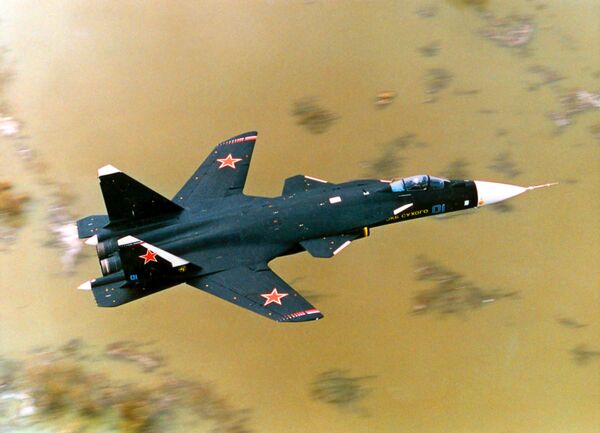
7/17
© Sputnik / Pashkovskiy
The Su-47 Berkut (Golden Eagle) was a Russian carrier-based jet fighter project designed by the Sukhoi Designed Bureau. A distinguished feature of the aircraft was its forward-swept wing that gave the aircraft excellent maneuverability. The project was cancelled, but the sole produced Su-47 has served as a prototype for many advanced technologies, including those used in the T-50 PAK (FA).
Above: A Su-47 aircraft during flight.
Above: A Su-47 aircraft during flight.

The Su-35 (NATO reporting name Flanker-E) is a Russian 4++-generation super-maneuverable multirole jet fighter. The aircraft is a deeply modernized version of the Su-27 jet fighter. The new aircraft was equipped with a reinforced airframe, thrust vectoring engines, and advanced avionics and radar.
Above: A Su-35 multirole fighter during flight.
Above: A Su-35 multirole fighter during flight.
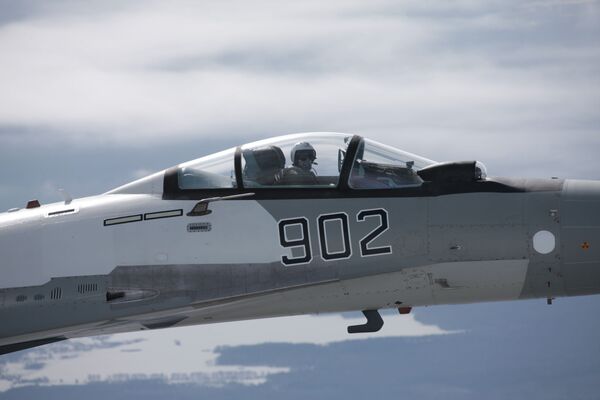
According to the Sukhoi Design Bureau, the 4++-generation fighter was designed to bridge the gap between previous generation aircraft and the upcoming fifth-generation T-50 PAK (FA).
Above: A Su-35 multirole fighter during flight.
Above: A Su-35 multirole fighter during flight.
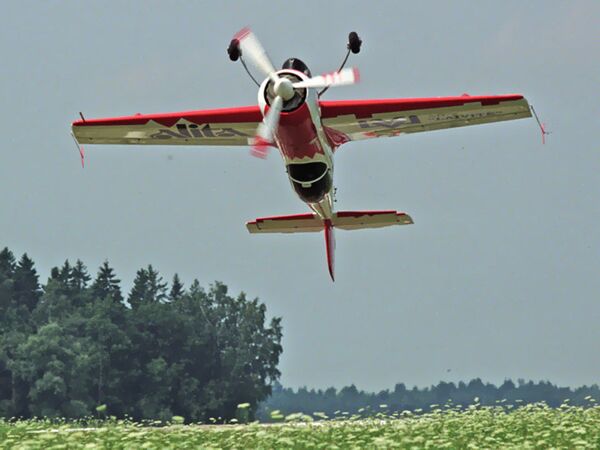
The Su-26 is a single-seat aerobatics plane, powered by a single radial piston engine. It made its first flight in June 1984. It was world’s first aerobatics plane to withstand an overload of up to 12g. The Su-26 was also the first civil aircraft designed by the Sukhoi Design Bureau.
Above: A Su-26 performs aerobatic maneuvering.
Above: A Su-26 performs aerobatic maneuvering.
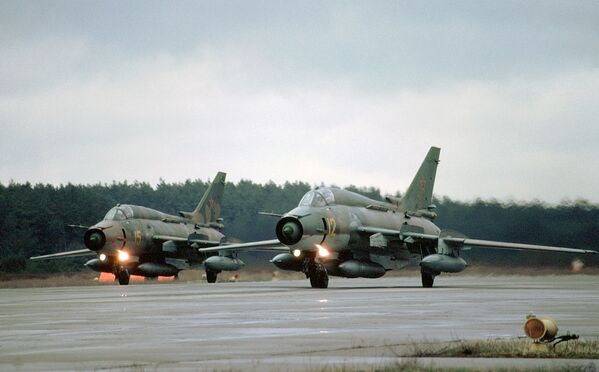
The Su-17 (NATO reporting name Fitter) is Soviet variable-sweep wing fighter bomber. The aircraft enjoyed a long career in the Soviet/Russian Air Forces and was widely exported.
Above: Su-17’s taking off.
Above: Su-17’s taking off.
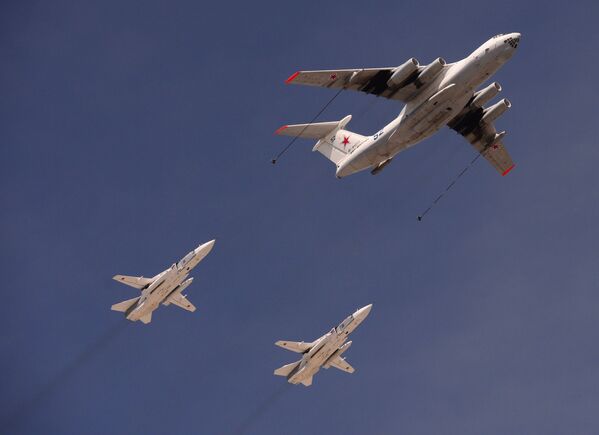
12/17
© Sputnik / Host photo agency/Vladimir Vyatkin
Over many decades, the Sukhoi Design Bureau has developed nearly a 100 types of aircraft and modifications, including 60 series-produced aircraft. Over 10,000 Sukhoi aircraft were produced.
Above: An Il-78 Air F tanker and Su-24 tactical bombers at the final rehearsal of the military parade for the 70th anniversary of Victory in the 1941-1945 Great Patriotic War.
Above: An Il-78 Air F tanker and Su-24 tactical bombers at the final rehearsal of the military parade for the 70th anniversary of Victory in the 1941-1945 Great Patriotic War.

13/17
© Sputnik / Mikhail Mokrushin
More than 50 world records have been set on Sukhoi aircraft.
Above: A Be-103 amphibious aircraft at the Hydro Air Salon 2014 in Gelendzhik.
Above: A Be-103 amphibious aircraft at the Hydro Air Salon 2014 in Gelendzhik.

14/17
© Sputnik / Oleg Lastochkin
The Su-33 is an all-weather carrier-based twin-engine air superiority fighter. It was based on the Su-27 and was initially known as the Su-27K. The aircraft was first used in operations in 1995 aboard the carrier Admiral Kuznetsov.
Above: A Sukhoi Su-33 fighter takes off from the heavy aircraft carrying cruiser Admiral Kuznetsov of the Russian Northern Fleet.
Above: A Sukhoi Su-33 fighter takes off from the heavy aircraft carrying cruiser Admiral Kuznetsov of the Russian Northern Fleet.
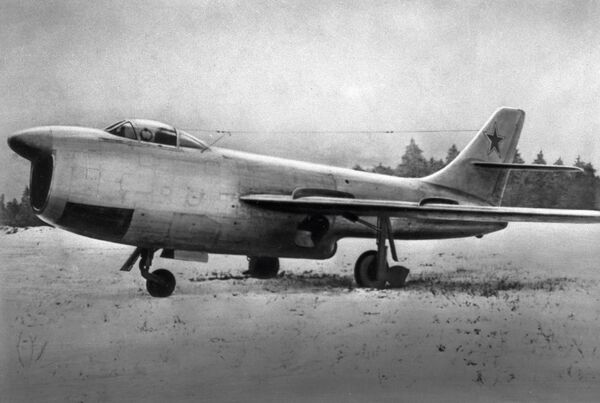
15/17
© Sputnik
The Su-15 (NATO reporting name Flagon) was a Soviet twin-engine supersonic interceptor. The Su-15 was a major part of the Soviet interceptor force until the fall of the Soviet Union.
Above: An experimental variant of the Su-15 aircraft.
Above: An experimental variant of the Su-15 aircraft.

16/17
© Sputnik / Aleksei Druzhinin
The Su-25 (NATO reporting name Frogfoot) is a Soviet/Russian single-seat twin-engine aircraft. It was designed to provide close air support for the Soviet Ground Forces. The aircraft has seen combat in several conflicts during its more than 30 years in service.
Above: Su-25SM jet aircraft at the military parade to mark the 70th anniversary of Victory in the 1941-1945 Great Patriotic War.
Above: Su-25SM jet aircraft at the military parade to mark the 70th anniversary of Victory in the 1941-1945 Great Patriotic War.
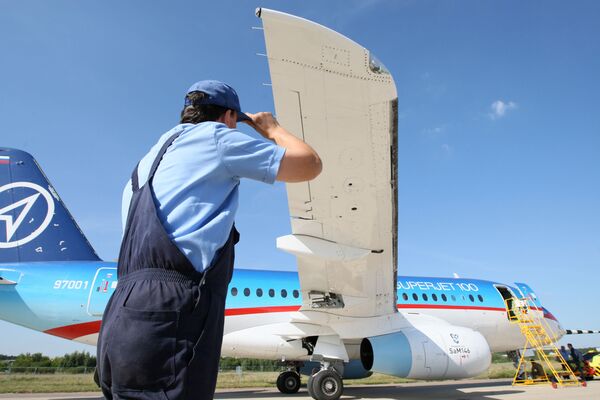
17/17
© Sputnik / Aleksei Kudenko
In September 2007, Russia launched its first modern commercial regional airliner with up to 108 seats – the Superjet 100. Its development was initiated in 2000. The aircraft was built by the Sukhoi Design Bureau, in cooperation with several foreign partners. Its maiden flight was conducted on May 19 2008. In comparison with its foreign analogues, the SSJ-100 provides lower operating costs as well as lower purchase price.
Above: A Sukhoi Superjet 100 airliner at the Zhukovskoye airport.
Above: A Sukhoi Superjet 100 airliner at the Zhukovskoye airport.



